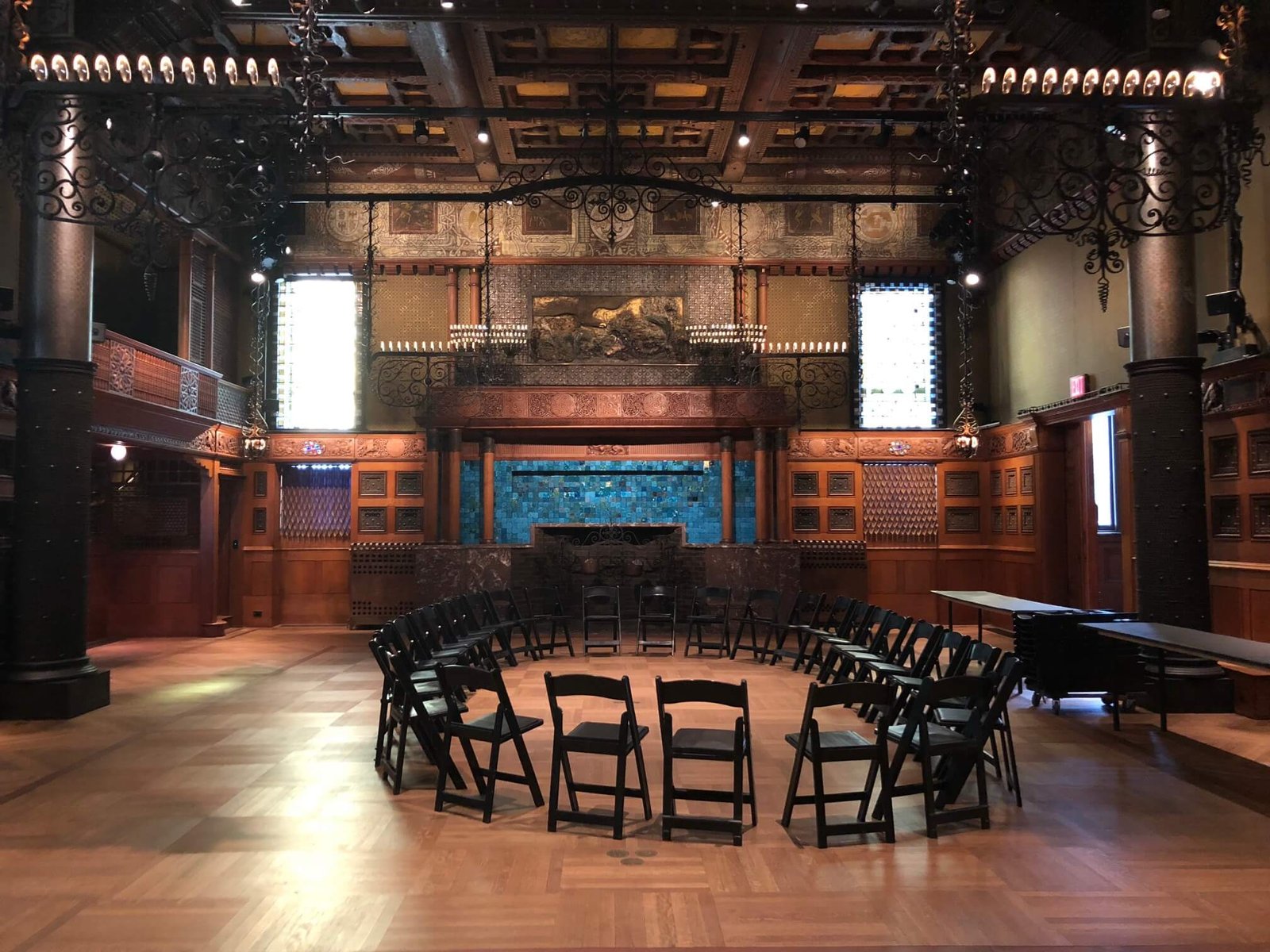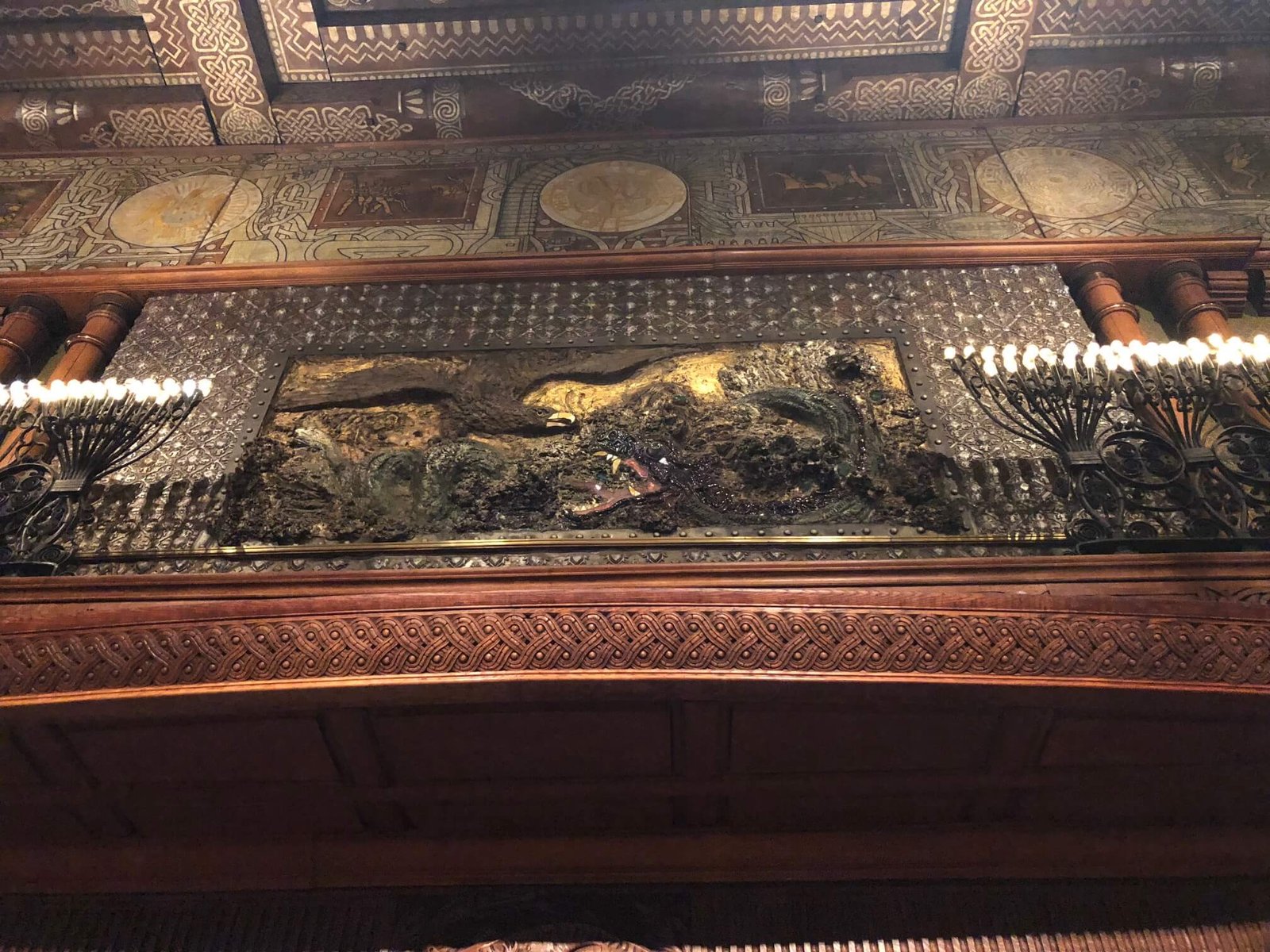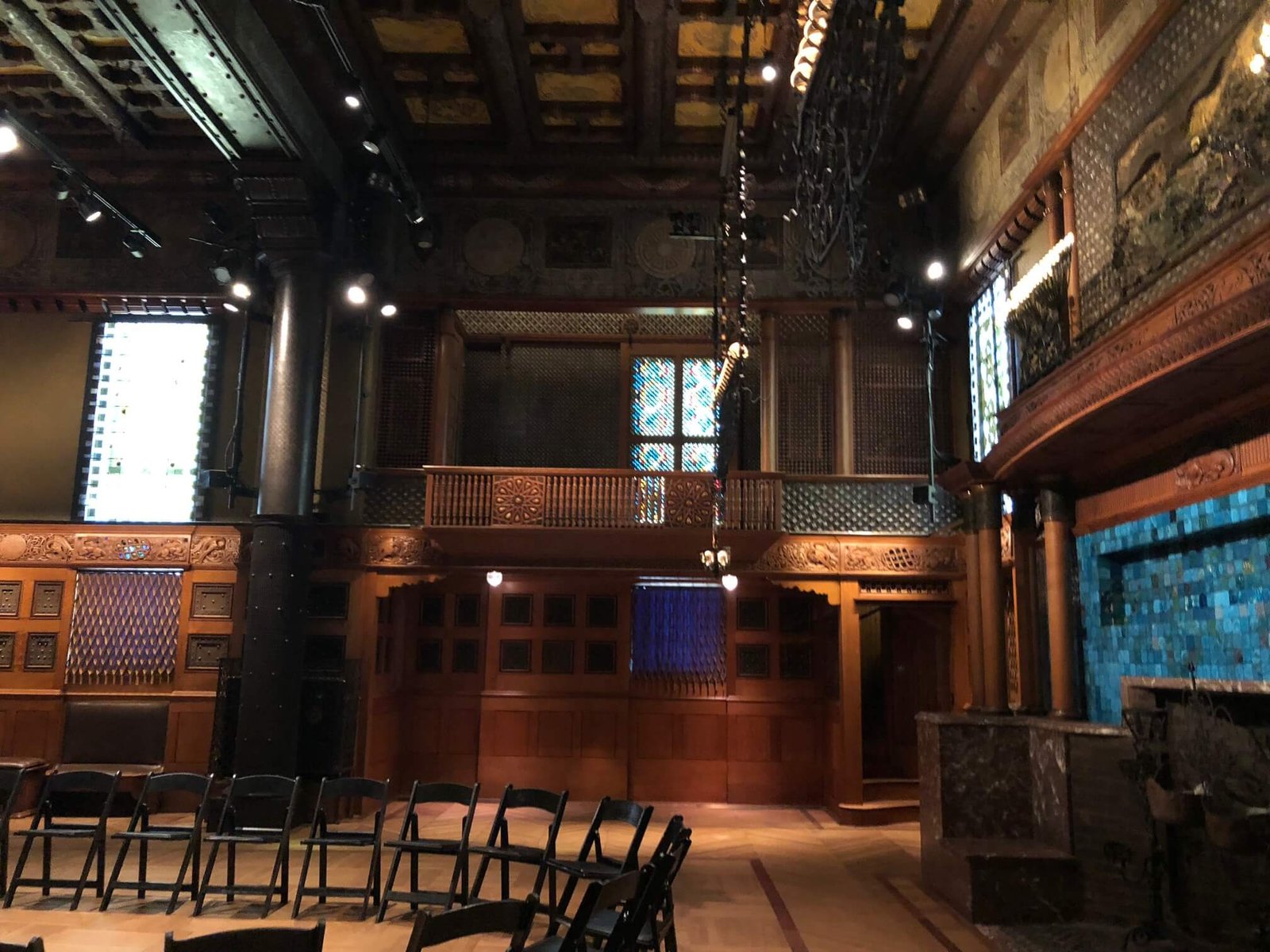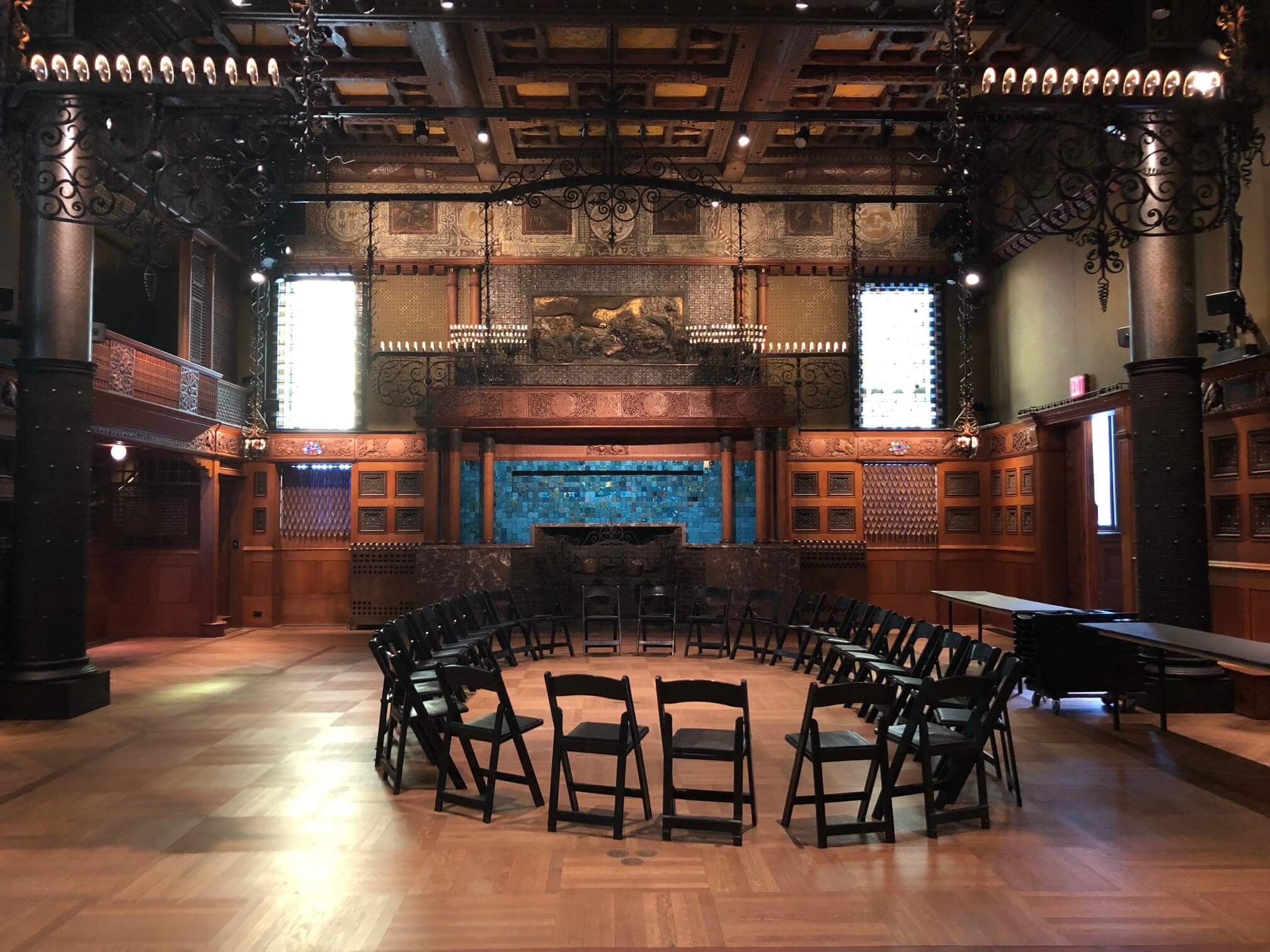New York City’s Park Avenue Armory was originally a headquarters for the National Guard’s Seventh Regiment. It’s now a major events venue. Everything about the Armory is cool, especially the Wade Thompson Drill Hall, where all the events happen. However, I prefer the lovely suite of period rooms. Whenever I visit the Armory, I try to take a few minutes to enjoy the rooms on the first floor, which are open to the public most of the time. The Veterans Rooms is my favorite.

The Veterans Room, which was completed in 1881, is the world’s only remaining complete interior by Aesthetic Movement interior design firm Associated Artists. This was a short-lived collaboration among four giants of Gilded Age decorative arts – Louis Comfort Tiffany, painter and furniture designer Lockwood de Forest, textile and wallpaper designer Candace Wheeler, and artist Samuel Colman. Architect Stanford White contributed to the Veterans Room as well, and all of these artists’ talents are fully on display in this spectacular room. When I stopped by the Veterans Room on a recent visit to the Armory, I was blown away by how amazing it is – more so than I had ever noticed before. It turns out that the Veterans Room had a thorough restoration in 2016, and I guess I haven’t really spent much time there since.

The Seventh Regiment wasn’t your average National Guard militia. It included members of New York City’s most prominent families, like the Roosevelts and Van Rensselaers. The Seventh Regiment is sometimes called the “Silk Stocking Regiment” for that reason. These wealthy members funded the armory building and hired their go-to designers to furnish the interior.



The Veterans Room is unique, dignified, and mysterious. When I stepped inside, I felt as though I had entered a shrine left over from some ancient religion. The room is decorated in a mixture of several styles, all filtered through Arts & Crafts and Aesthetic Movement design, to a slightly otherworldly effect.
Depending on which inch you’re looking at, it’s Islamic, Chinese, Greek, Celtic, Egyptian, Persian or an indefinable mélange of them all, on which no expense was spared.
Park Avenue Armory website.
To me, the Celtic elements are most prominent. Interlace and Book of Kells-style animals appear in both carved and painted form. When I first visited the Veterans Room in 2014, I was instantly fascinated by the people and animals within the interlace all over the ceiling and how they seemed to tell some mythological story. I wrote that it reminded me of the Golden Hall of Edoras from The Lord of the Rings. Meanwhile, the military mosaics just below the ceiling feel like archaic Greek, and the elegant woodwork railings and screens show Asian influence. In general, the glass work particularly stood out to me. The brilliant, piercing blue of the fireplace tiles seem to glow with some strange inner fire. The tiles look uniform from a distance, but up close, each one has a unique, swirling pattern. I also loved the stained-glass windows and little bits of jewel-toned glass set into the woodwork interlace. There are painting on the walls and ceiling, woodwork, mosaics, imposing metal light fixtures, and reproductions of Wheeler’s original rich wallpaper. Above the fireplace, a relief sculpture shows a dragon and eagle doing battle; it looks like something that could have been excavated from the ruins of ancient Assyria or something like that. No surface in the entire room has been overlooked.

I could have explored the Veterans Room all day and continued to find even more amazing decorative details to gush about. Why not experience it for yourself and see if there’s anything I missed? There are also several other period rooms you can check out. Click here to find out more about visiting the Park Avenue Armory.

Sources
- “Historic Interiors Guide“. Park Avenue Armory.
- Kennedy, Randy. “The Gilded Age Glows Again at the Park Avenue Armory’s Veterans Room“. The New York Times. March 6, 2016.
- AFineLyne. “Inside the Newly Restored Veterans Room in NYC’s Park Avenue Armory“. Uptapped New York. April 4, 2016.



